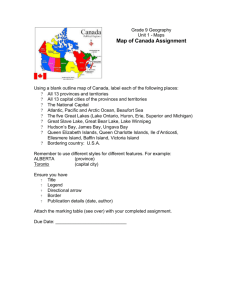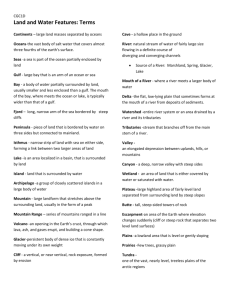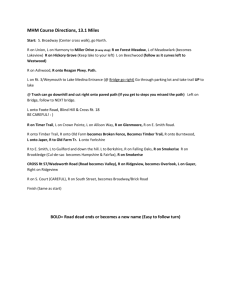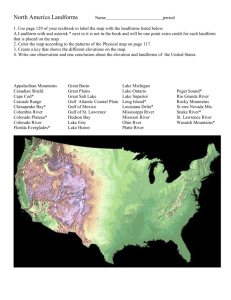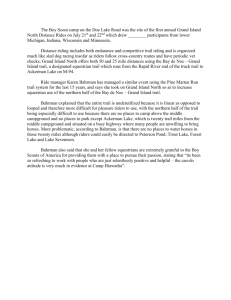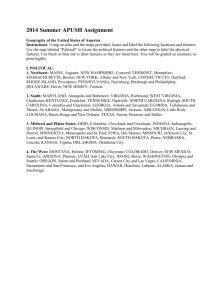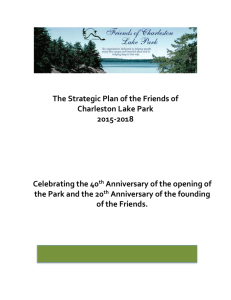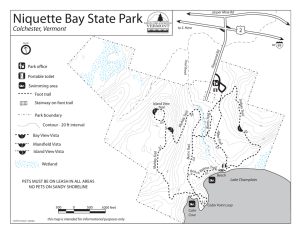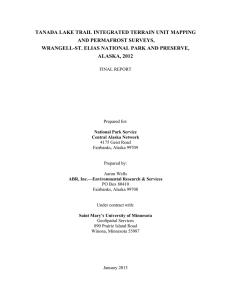HUNTER COLLEGE OF THE CITY UNIVERSITYOF NEW YORK DEPARTMENT OF GEOGRAPHY
advertisement
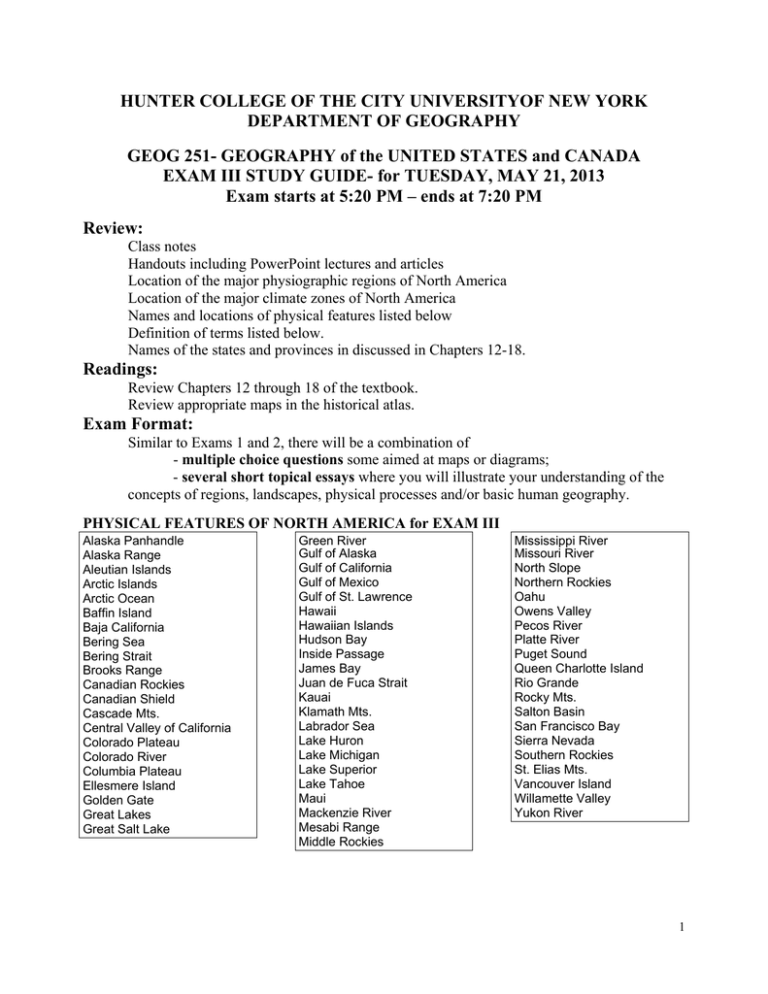
HUNTER COLLEGE OF THE CITY UNIVERSITYOF NEW YORK DEPARTMENT OF GEOGRAPHY GEOG 251- GEOGRAPHY of the UNITED STATES and CANADA EXAM III STUDY GUIDE- for TUESDAY, MAY 21, 2013 Exam starts at 5:20 PM – ends at 7:20 PM Review: Class notes Handouts including PowerPoint lectures and articles Location of the major physiographic regions of North America Location of the major climate zones of North America Names and locations of physical features listed below Definition of terms listed below. Names of the states and provinces in discussed in Chapters 12-18. Readings: Review Chapters 12 through 18 of the textbook. Review appropriate maps in the historical atlas. Exam Format: Similar to Exams 1 and 2, there will be a combination of - multiple choice questions some aimed at maps or diagrams; - several short topical essays where you will illustrate your understanding of the concepts of regions, landscapes, physical processes and/or basic human geography. PHYSICAL FEATURES OF NORTH AMERICA for EXAM III Alaska Panhandle Alaska Range Aleutian Islands Arctic Islands Arctic Ocean Baffin Island Baja California Bering Sea Bering Strait Brooks Range Canadian Rockies Canadian Shield Cascade Mts. Central Valley of California Colorado Plateau Colorado River Columbia Plateau Ellesmere Island Golden Gate Great Lakes Great Salt Lake Green River Gulf of Alaska Gulf of California Gulf of Mexico Gulf of St. Lawrence Hawaii Hawaiian Islands Hudson Bay Inside Passage James Bay Juan de Fuca Strait Kauai Klamath Mts. Labrador Sea Lake Huron Lake Michigan Lake Superior Lake Tahoe Maui Mackenzie River Mesabi Range Middle Rockies Mississippi River Missouri River North Slope Northern Rockies Oahu Owens Valley Pecos River Platte River Puget Sound Queen Charlotte Island Rio Grande Rocky Mts. Salton Basin San Francisco Bay Sierra Nevada Southern Rockies St. Elias Mts. Vancouver Island Willamette Valley Yukon River 1 DEFINITIONS and TERMINOLOGY for EXAM III that were mentioned in class or in the textbook: Acculturation Adobe Alta California Aquifer Badlands Basin and range topography Bison Blizzard Boreal forest Braided river Buffalo jump Bur. of Land Managem’t (BLM) Caldera California Trail Cattle drive Central Arizona Project Chaco Culture Chinook wind Clear cutting Continental Divide Doctrine of Prior Appropriation Drought Dust Bowl Earthquake El Camino Real Fault zone Fish ladder Fjord Four Corners Gadsden Purchase Ghost town Hacienda High Plains Hinterland Hot spot Hydroelectricity Inuit Nation John Jacob Astor Klondike Lahars Métis Mexican Cession Mollisol soil Mormon Trail Mud flow Navaho Nation Northwest Passage Ogallala Aquifer Oil Shale Old Town Open pit mine Oregon Country Oregon Trail Oregon Treaty of 1846 Orographic precipitation Permafrost Pivot irrigation Plains Prairie Prairie Provinces Presidio Pueblo Rain shadow Rancho Range Wars Riparian Rights Salt flats Santa Ana wind Santa Fe Trail Shield volcano Smog Sod house Spanish Mission St. Lawrence Seaway Strip mining Taiga Tar Sands Temperate rain forest Temperature inversion Texas Rebellion Tornado Alley Transcontinental railroad Transhumance Tree line Tundra Wagon train Winter wheat CITIES OF US&C for EXAM III Albuquerque, NM Anchorage, AK Calgary, AB Churchill, MB Dallas, TX Denver, CO Duluth, MN Edmonton, AB El Paso, TX Fairbanks, AK Honolulu, HI Juneau, AK Kansas City, MO Las Vegas, NV Los Angeles, CA Minneapolis, MN Oakland, CA Phoenix, AZ Portland, OR Reno, NV Sacramento, CA Salt Lake City, UT San Diego, CA San Francisco, CA San Jose, CA Santa Barbara, CA Santa Fe, NM Seattle, WA Thunder Bay, ON Tucson, AZ Vancouver, BC Wichita, KS Winnipeg, MB ©AFG 0513 2
